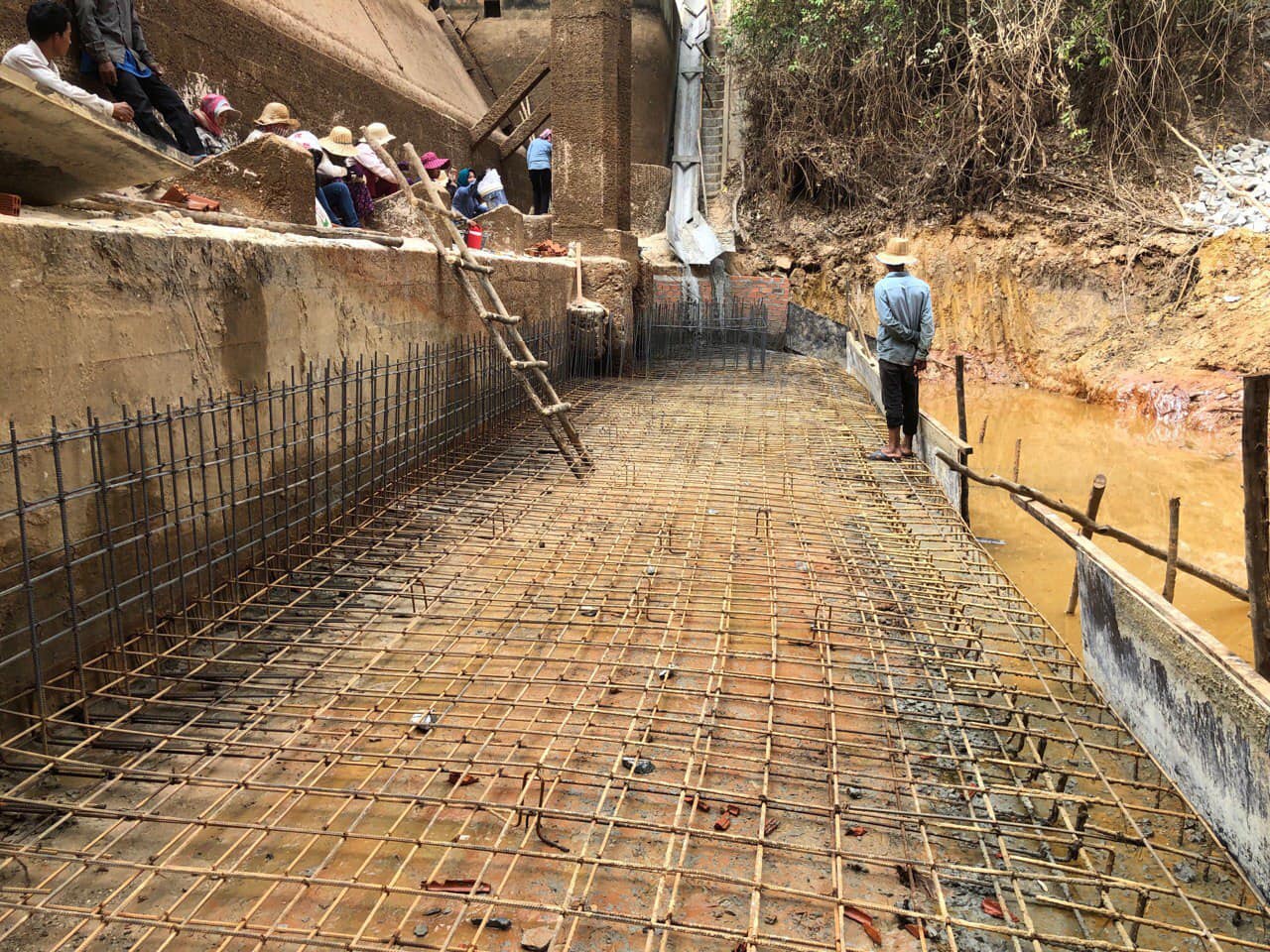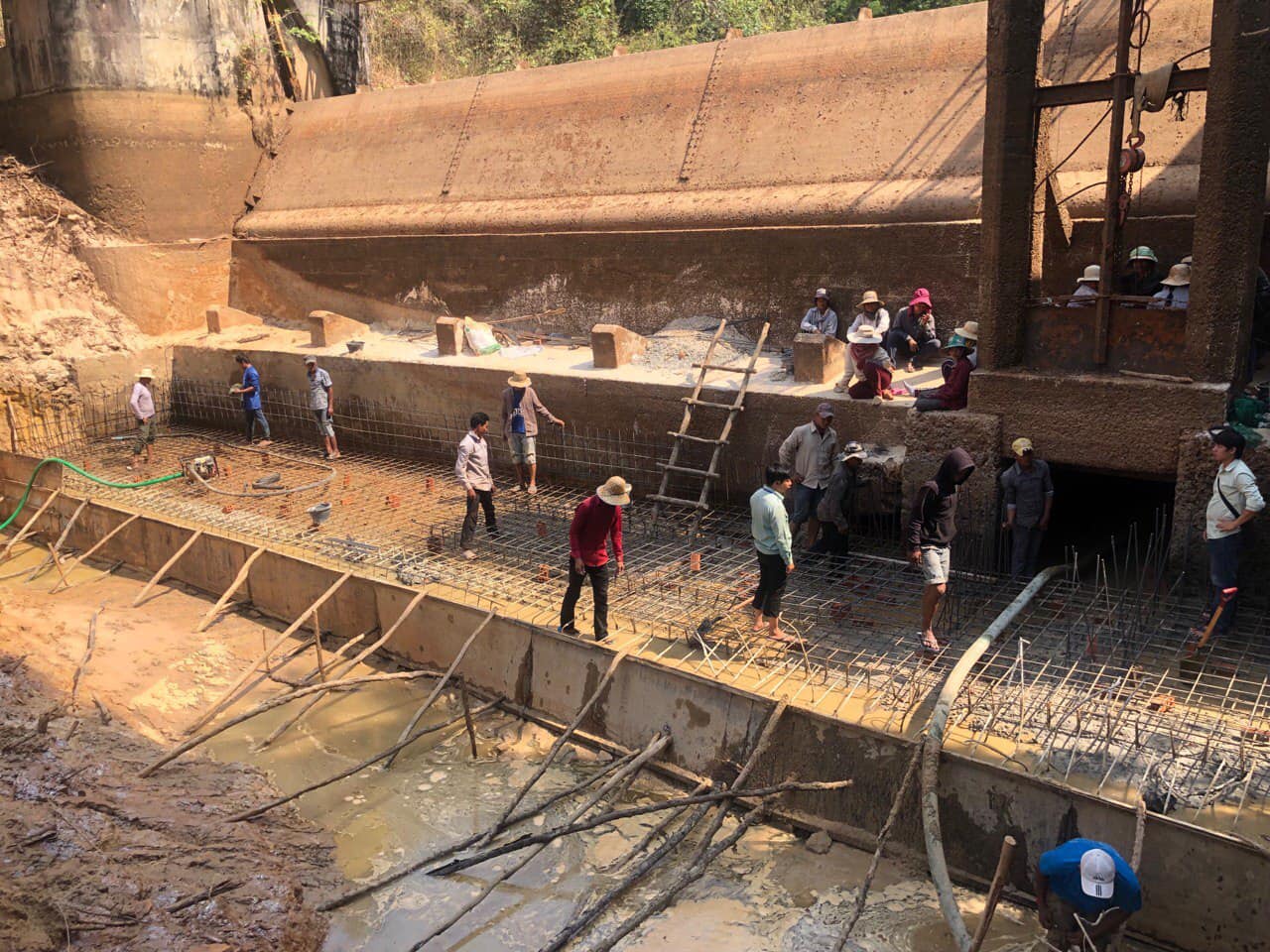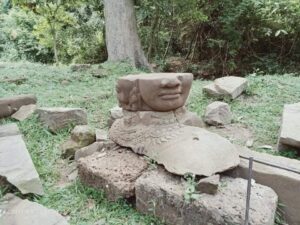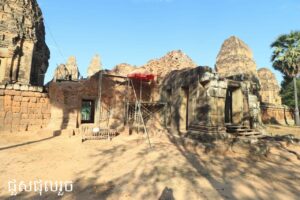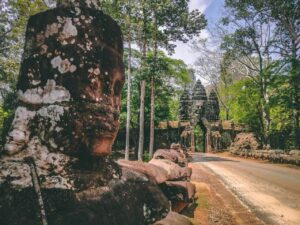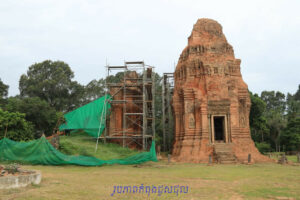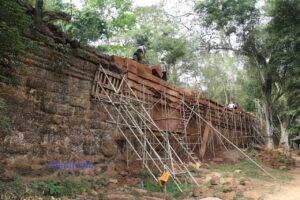Colonial Reservoir Gate Repairs to be Complete Before Khmer New Year
The Apsara National Authority (ANA) has said that repair work on a colonial-era french watergate in the Angkor Archaeological Park is expected to be completed before Khmer New Year.
The work aims to improve the value and quality of the structure, which is one of the main reservoirs in the region that is used to store water for the dry season.
The current repair work on the watergate project located by the Siem Reap River, north of the Ta Nei temple, is set to be completed before Khmer New Year arrives, according to an ANA Facebook post on Friday.
“The gate collects water from the Kulen Mountain and distributes it to the Siem Reap River, Baray reservoir and all irrigation systems connected to it,” the post read.
“It is also the main point preventing flooding in Siem Reap during the rainy season,” ANA said in the Facebook post.
ANA’s deputy director of the water management department Phoeun Sokhim said the water storage system had deteriorated due to its age and weather impacts.
He said this caused the foundations of the building to decay, affecting its water storing capacity.
“On February 20, the team began repairs on the foundation by laying concrete reinforcements and improving overall waterproofing on the gate,” according to the Facebook post.
“The work is progressing well and the project will be completed by the end of March this year,” Sokhim said.
He said the gate was first built by the French around the 1930s. “In the 1960s, an American infrastructure project added steel doors which allowed the gate to be opened and closed based on the water flow into the West Baray reservoir through the American-dug Canal A,” he said.
On Friday, ANA also began repairs on Kandal Srah Srong temple. It said the temple was built during King Jayavarman VII’s reign in the 12th century. The temple has inscriptions detailing King Jayavarman VII’s activities during his visits to the region.
